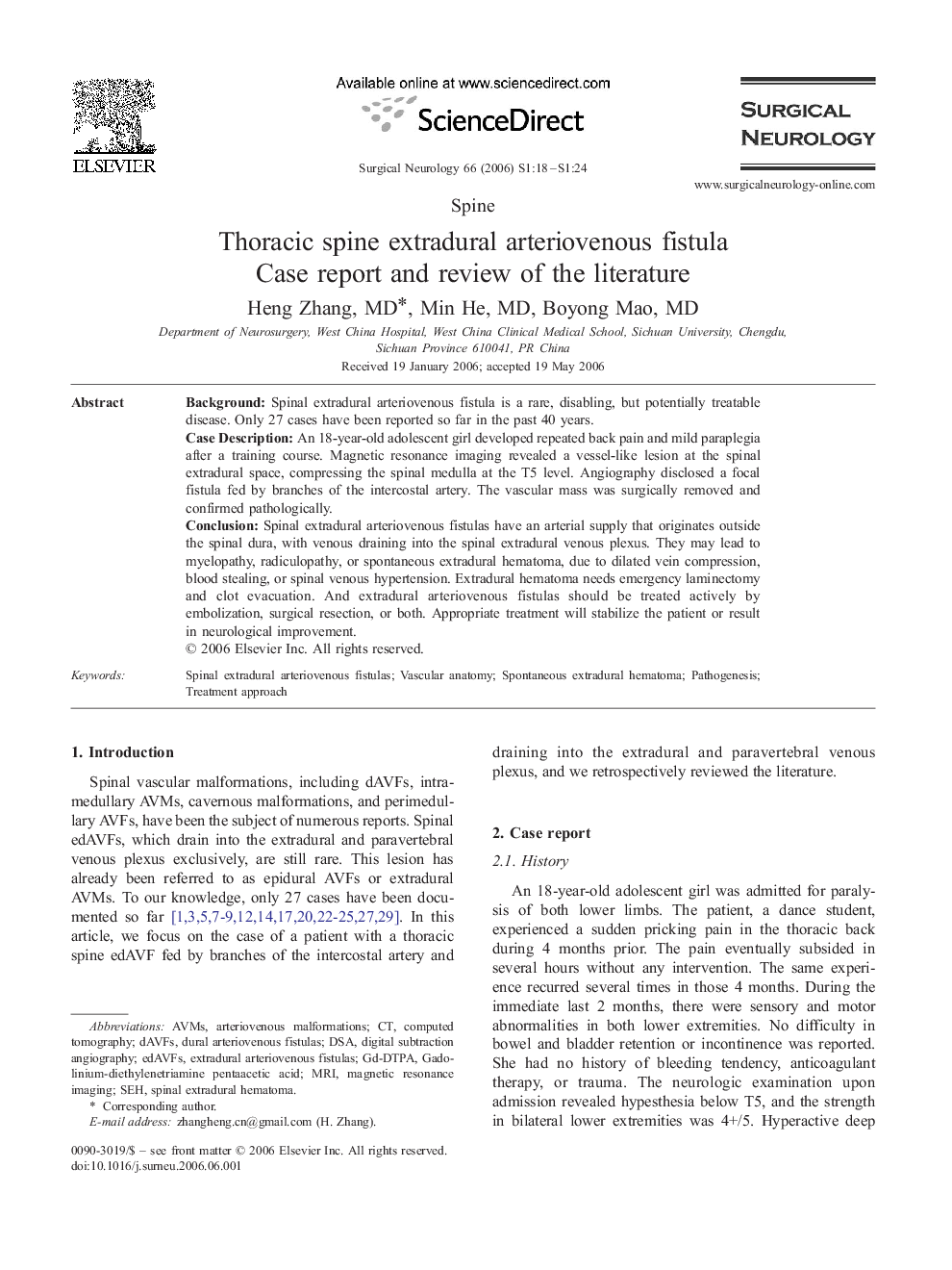| Article ID | Journal | Published Year | Pages | File Type |
|---|---|---|---|---|
| 3094117 | Surgical Neurology | 2006 | 6 Pages |
BackgroundSpinal extradural arteriovenous fistula is a rare, disabling, but potentially treatable disease. Only 27 cases have been reported so far in the past 40 years.Case DescriptionAn 18-year-old adolescent girl developed repeated back pain and mild paraplegia after a training course. Magnetic resonance imaging revealed a vessel-like lesion at the spinal extradural space, compressing the spinal medulla at the T5 level. Angiography disclosed a focal fistula fed by branches of the intercostal artery. The vascular mass was surgically removed and confirmed pathologically.ConclusionSpinal extradural arteriovenous fistulas have an arterial supply that originates outside the spinal dura, with venous draining into the spinal extradural venous plexus. They may lead to myelopathy, radiculopathy, or spontaneous extradural hematoma, due to dilated vein compression, blood stealing, or spinal venous hypertension. Extradural hematoma needs emergency laminectomy and clot evacuation. And extradural arteriovenous fistulas should be treated actively by embolization, surgical resection, or both. Appropriate treatment will stabilize the patient or result in neurological improvement.
